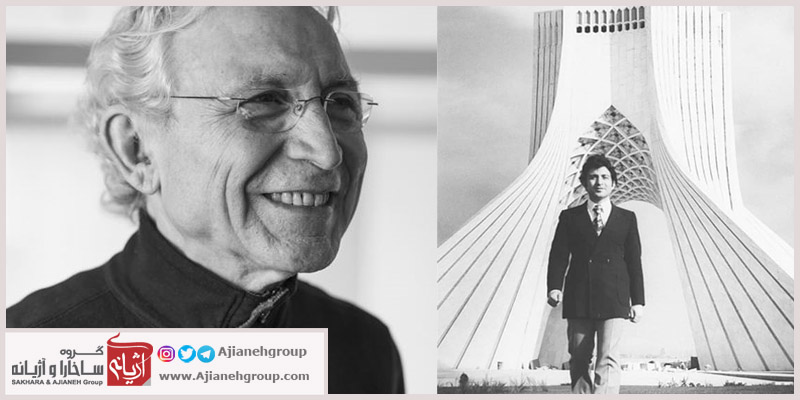Hossein Amanat
Hossein Amanat was born in 1942.He is an Iranian designer and architect of Azadi Tower, which is the symbol of Tehran city and modern Iran.
Hossein Amanat is also a designer and architect of several craft centers, schools, libraries and even a leisure town on the coast of the Caspian Sea. He later designed his works abroad as well. Among them: the construction of the Iranian Embassy in Beijing, the capital of the People’s Republic of China, the most distinctive embassy in the diplomatic district in Beijing.
Hossein Amanat is a graduate student at the University of Tehran. In 1966, Hossein Amanat, a 24-year-old student at the University of Tehran, started a career in national competition, establishing an Iranian-Islamic national symbol of Iranian modernity.
Hossein Amanat, with his plan, which was the great square of freedom, rebuilt Iran’s architecture, and succeeded in turning itself into a world-class architecture at the beginning of its youth. Prominent projects by Hossein Amanat have been welcomed and implemented in other countries, such as China, USA and Canada.
Hossein’s plans were based more on the linkage between Western classical architecture and the spirit of the Oriental architecture. The building’s use of stone is another feature of Hossein Amanat’s architecture. He works at his Canadian office on his international designs and projects. He has been living in Canada since 1980 as a Canadian citizen.

Biography of Hossein Amanat
History and Architecture The most prominent project of Hossein Amanat (Azadi Tower or Shahiyad Tower)
Hossein Imanat at the age of 24 when he was just out of the faculty of architecture at the University of Tehran, designed to celebrate the 2500th anniversary of the Persian Empire. The Freedom Tower, known before the 1979 Iranian Revolution, is known as the Shahiyad Tower, the main symbol of the city of Tehran, located in the middle of one of the main fields of western Tehran known as Shahyad Square and the current Liberty, and in almost every one. The place in the world knows Iran with this symbol.
Hossein Amanat, in an interview about the Azadi Tower, says: The Shahyad tower is designed to focus on the truth, essence and depth of Iranian culture. That is, according to what has been going on in Iran over history and a great deal in the history of this country. It is true that this was done at a time when another political situation prevailed in Iran, but when I designed it, I was thinking of all the historical and future periods of Iran, not in that particular political situation.
Azadi Square, the former Shahyad area with a total area of 50,000 square meters, after the Naqsh-e Jahan Square, is the largest square in Iran, where the Azadi Tower is one of the most well-known symbols of Tehran with a forty-eight-meter-high symbol as the capital’s symbol. The construction of the Azadi Tower began on November 11, 1969, and after twenty-eight months of work, on December 24, 1971, the Shahyad Tower was launched.
Hossein Amanat
Freedom Tower is a compilation of Achaemenid-Sasanian and Islamic architecture that Hossein Amanat has designed in accordance with Iranian-Islamic architecture. Parallel and drawn bases, reminiscent of Achaemenid architecture and its turquoise tile, is an example of the Safavid dynasty architecture. The elliptical arc of the symbolic tower of the arch of the fraction and the grooves above the tower have also represented the Yazd wind tunnels. In the construction of the Liberty Tower, forty-six thousand stone pieces have been cut and used. All of these, along with concrete and modern architectural symbols, make the tower look modern and eye-catching.
As mentioned above, in the construction of the Liberty Tower, forty-six thousand stone pieces have been used. The building has stones at the bottom of the tower, 3.2 meters long and 1.6 meters high, and it is the work of its own stones. These rocks are clad with stainless steel and concrete, and behind them there is a rigid surface that does not stick to it, and every stone next to the rock is plucked with a flexible material similar to the rubber called Flexible sealant. The use of materials other than this will break the rocks. Because in the summer heat and cold of the winter, the rocks and concrete underneath are constantly expanding and shrinking

